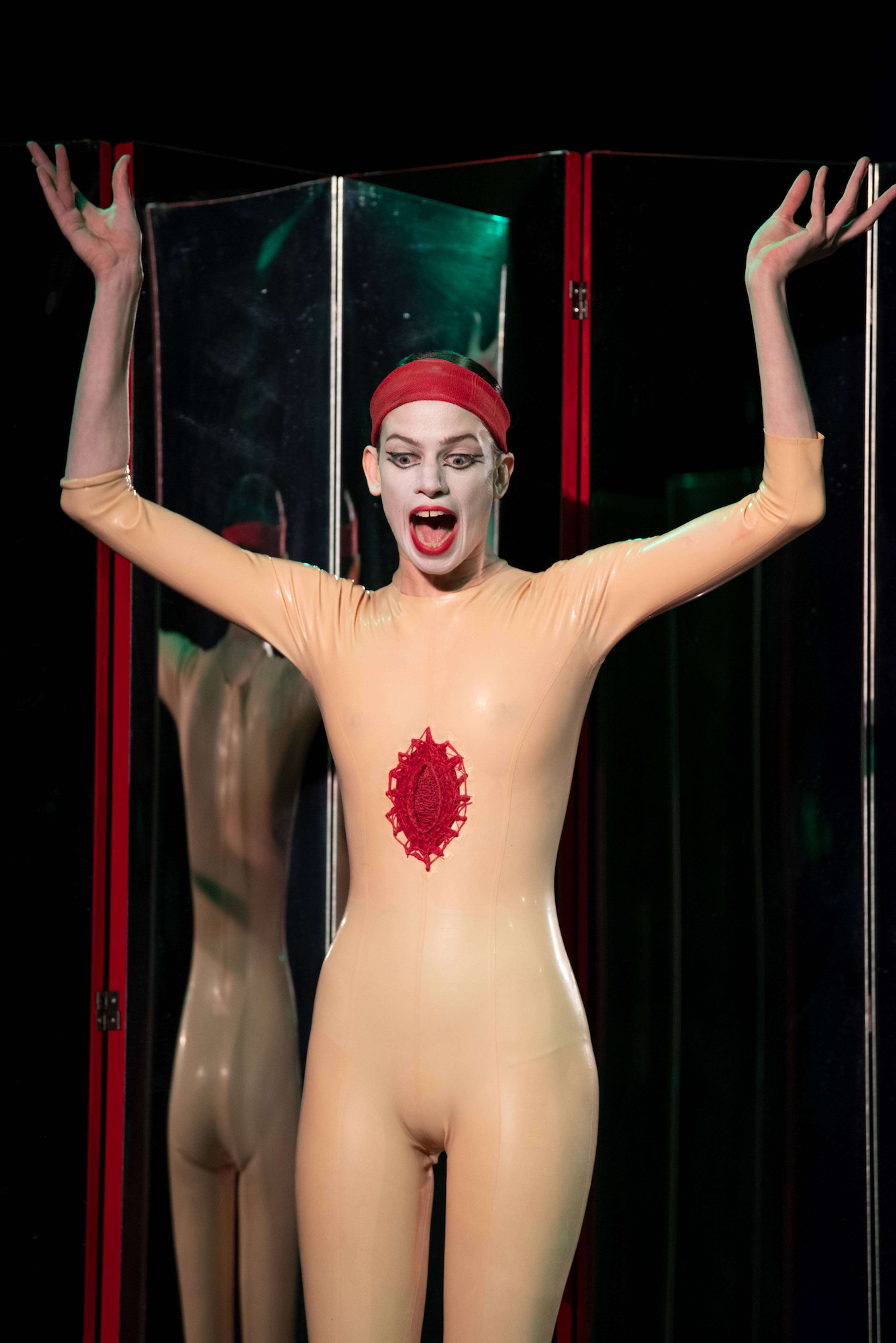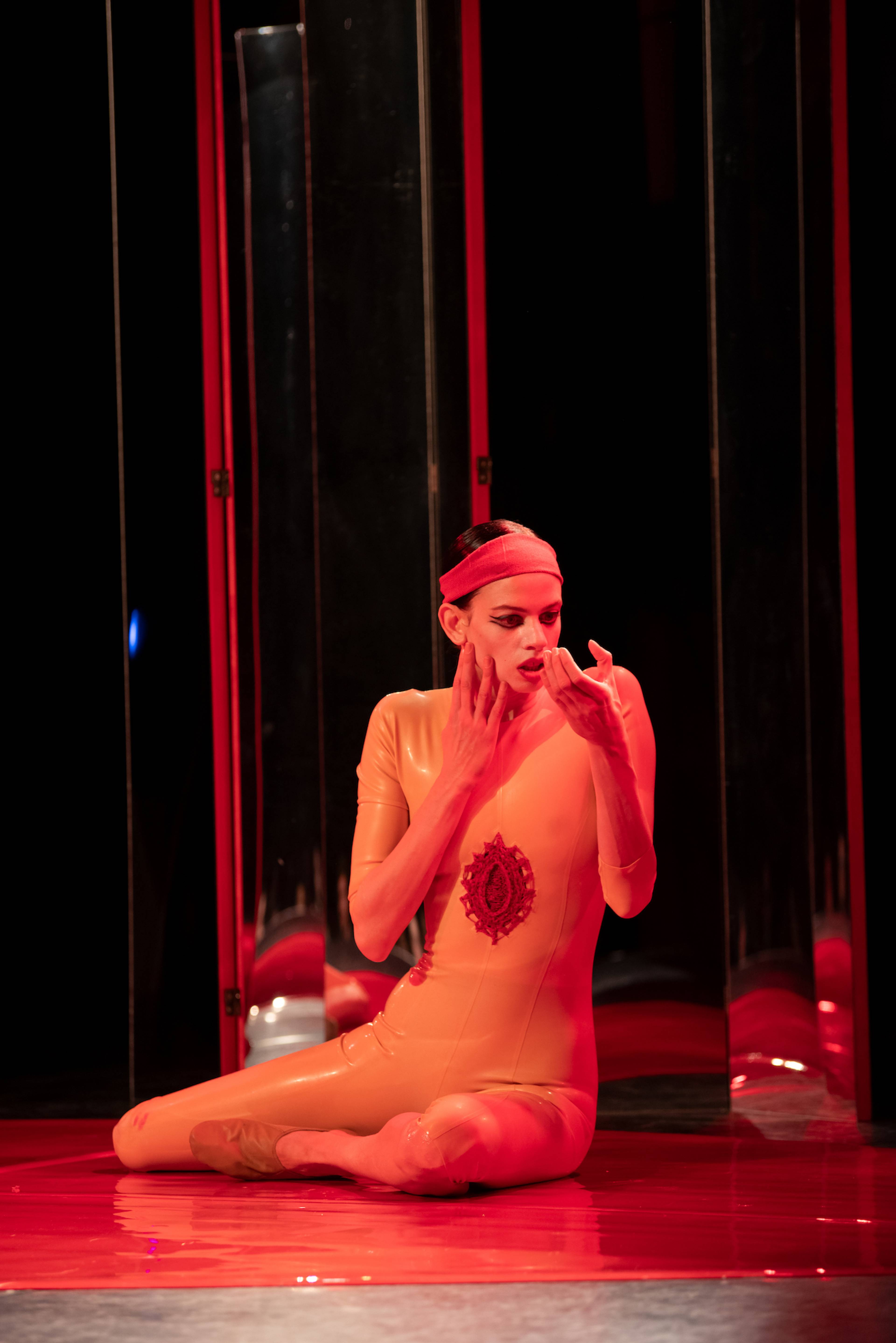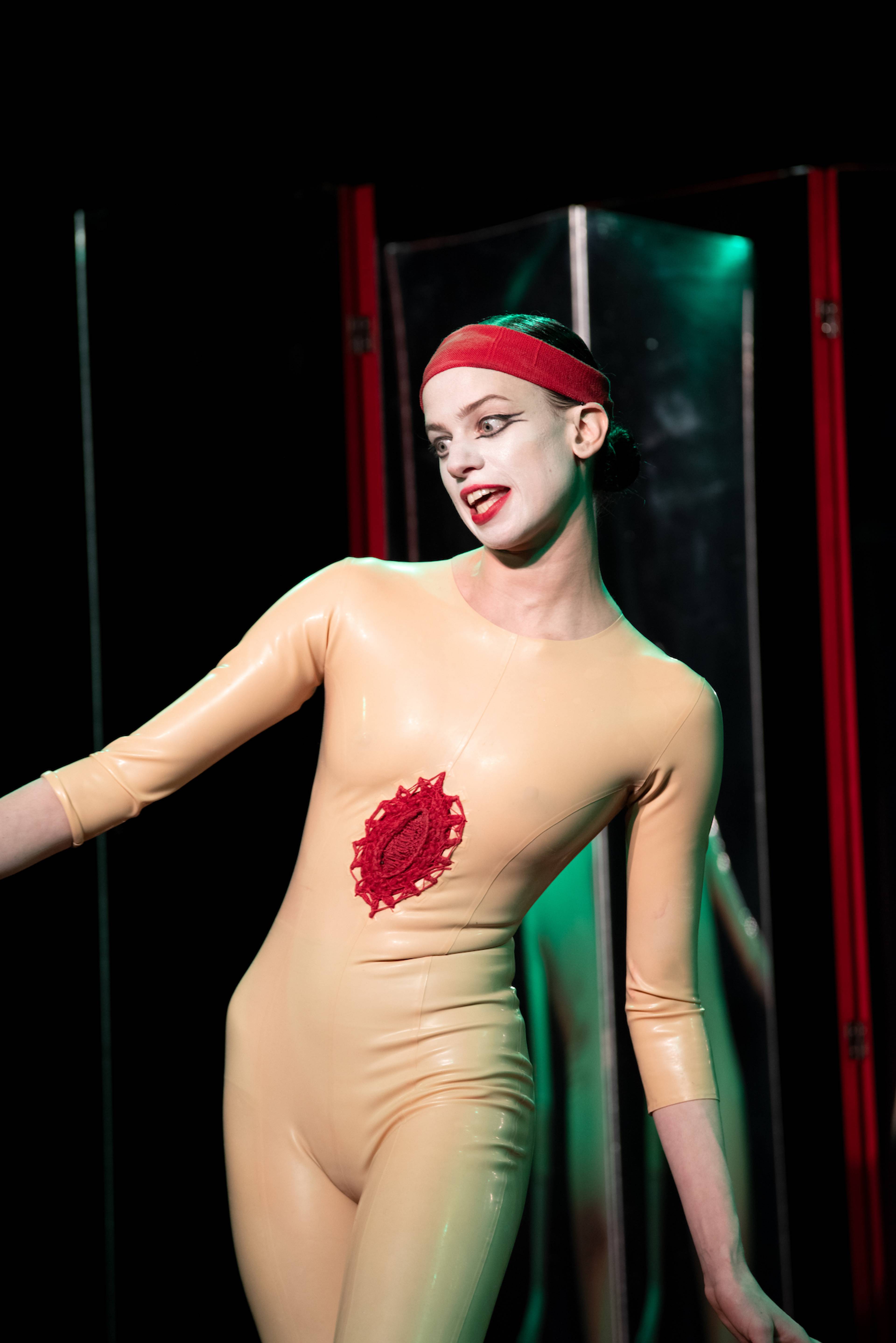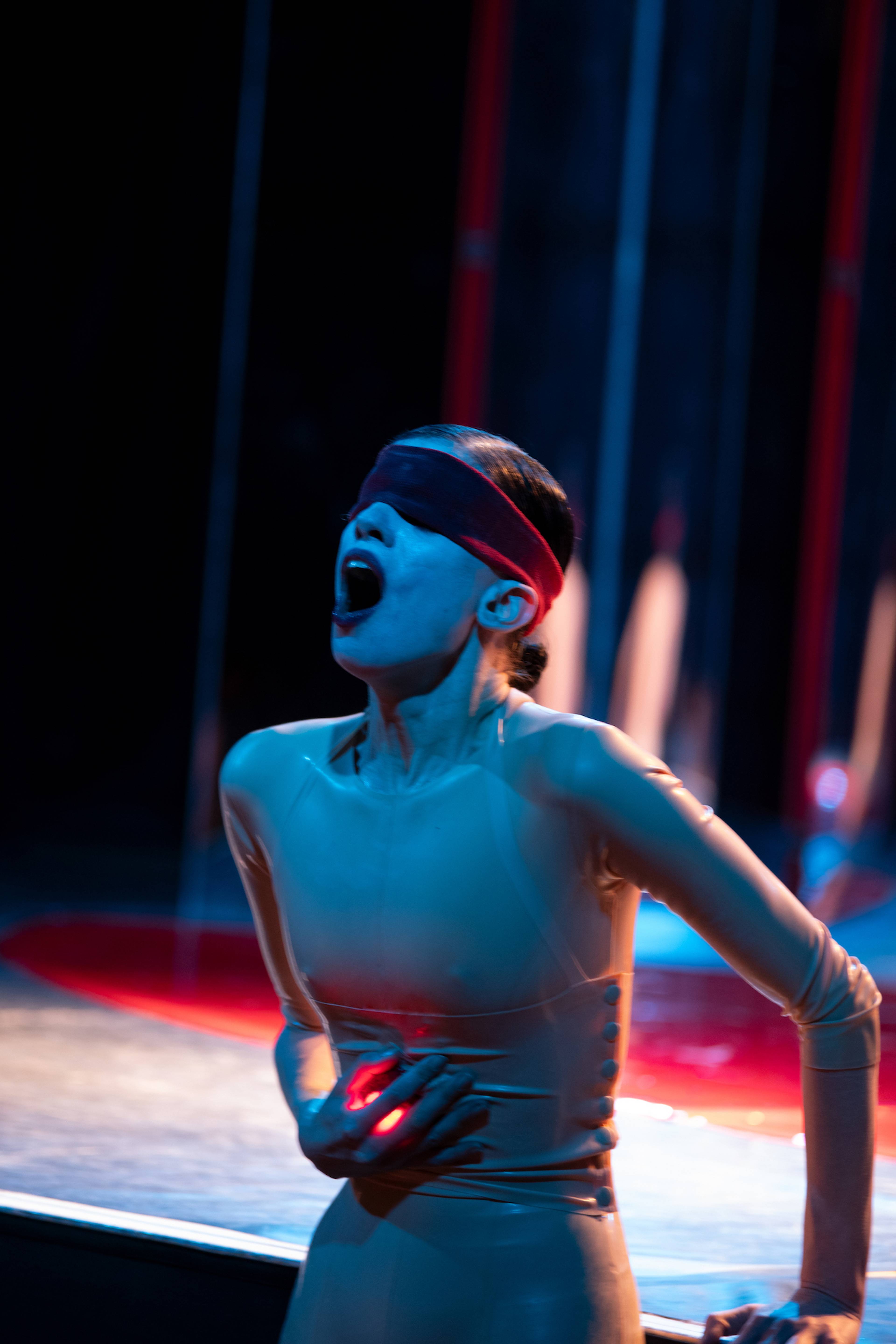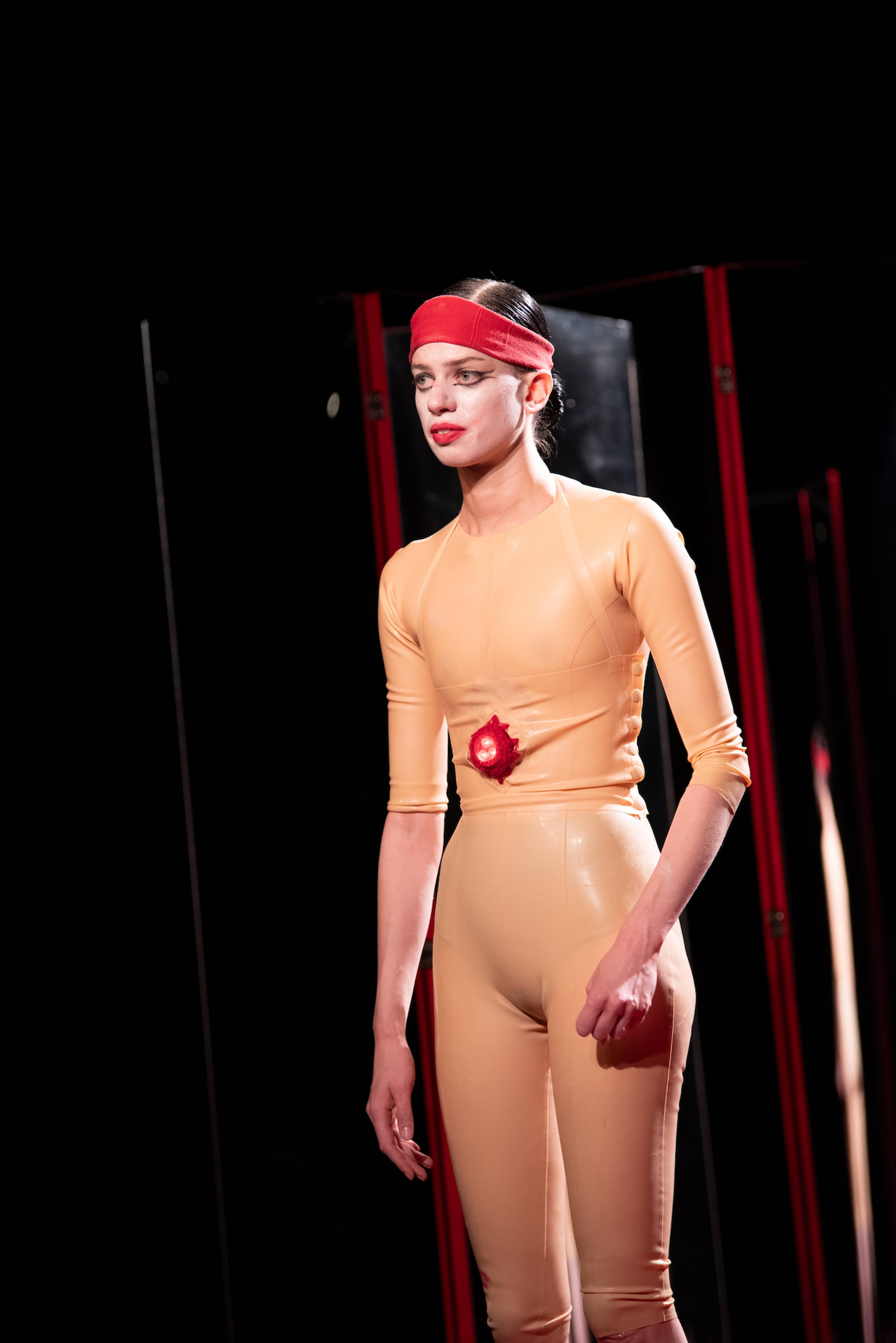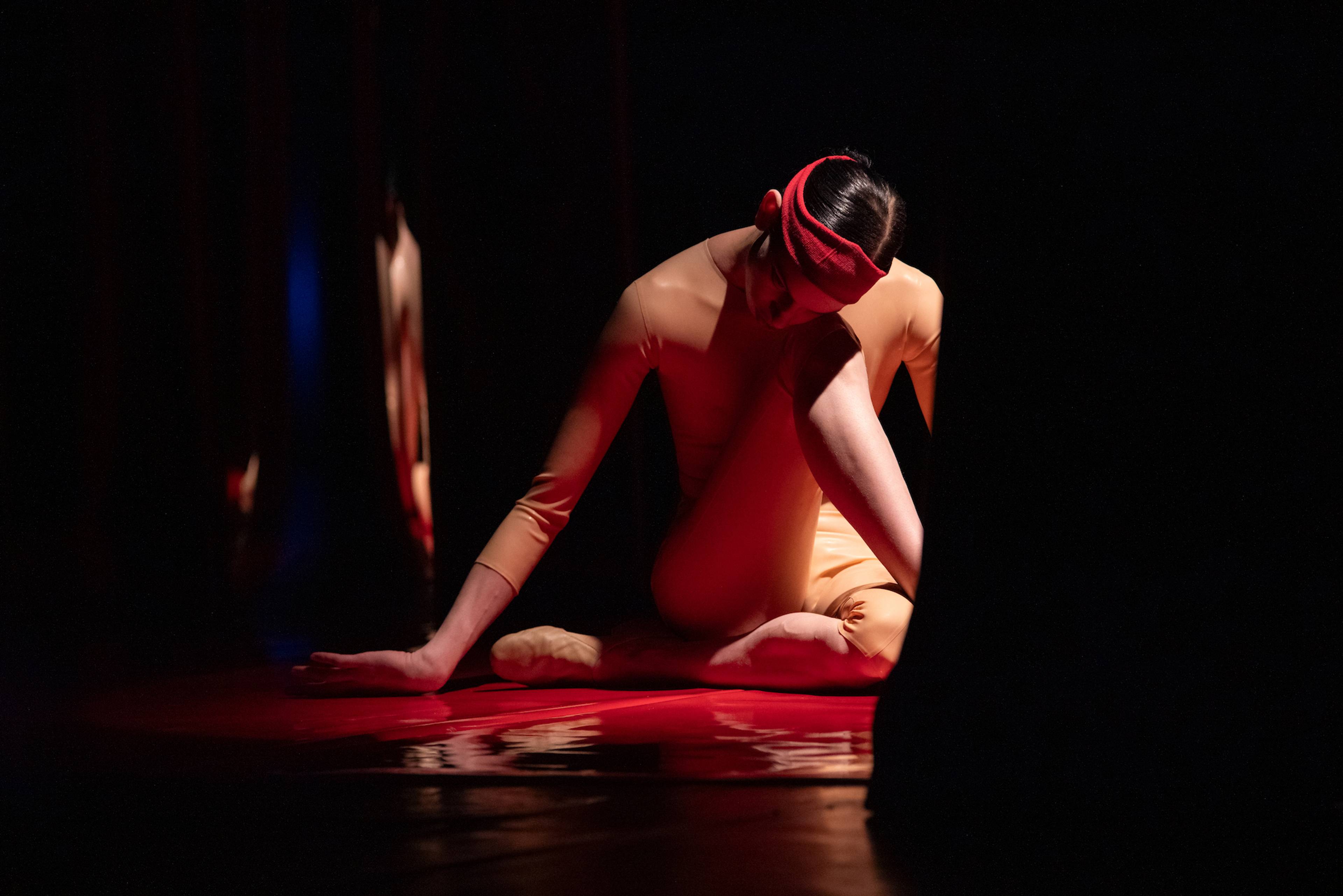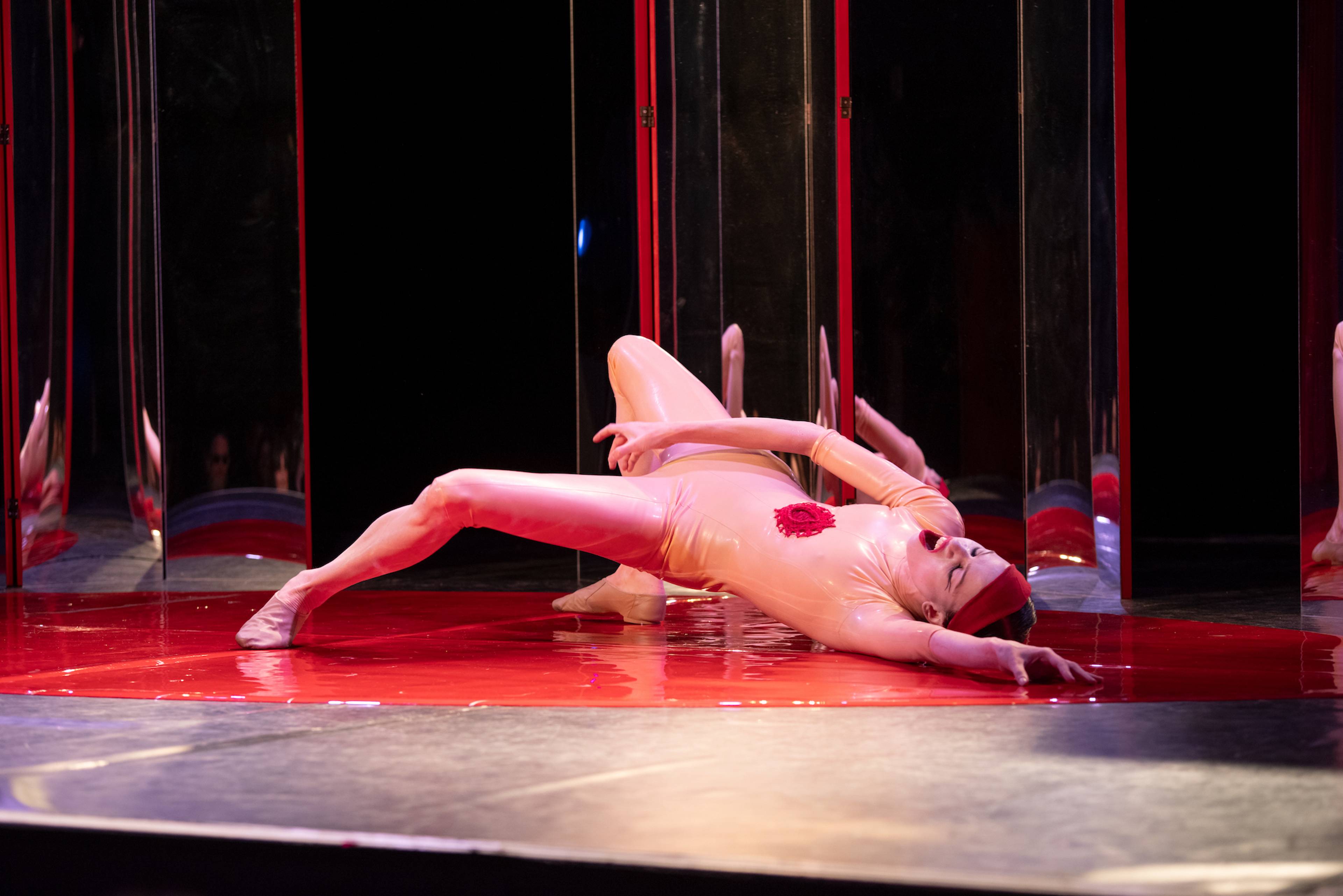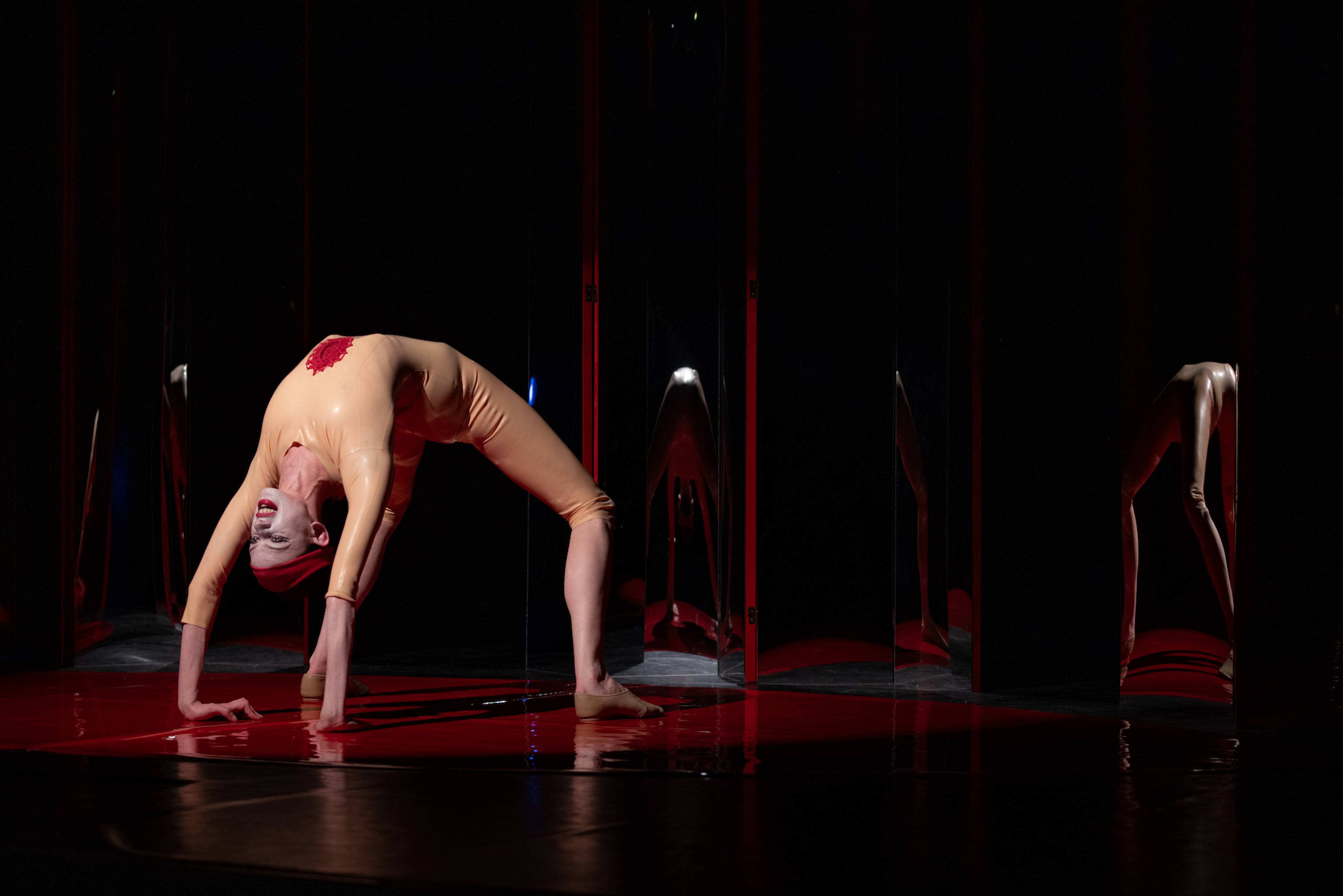It is a September night in Berlin, and during Art Week, a small theater in a squat building among taller, older apartment houses, fills up with an assorted art world crowd. The Art Deco auditorium, with its crystalline lamps, appears unchanged, yet well-kept since the early 1930s, when it was designed as a movie theater. “Isn’t this amazing,” the woman in the seat next to me, a collector, says. “Think of all the things that could happen in this place!”
For now, the performance A Hole Is a Hole by Lily McMenamy – presented by Galerie Isabella Bortolozzi, Berlin, in co-production with London Performance Studios – happens here, and the auditorium, with 190 seats downstairs and sixty on the balcony, is filling up. People sip wine in the foyer and slowly enter, as disco music is playing at a low volume. A curator friend has heard the performance might involve audience participation, so she’s looking for a seat away from the stage, she tells me with a smile.
And so it begins: McMenamy enters the auditorium, the curtains remain closed for now. She is blindfolded and stumbles onto the stage, a spotlight closing in around her. We are here to celebrate her comeback, she lets us know. She is the Muse, although muses are not traditionally blindfolded – nor do they wear a skintight, flesh-colored latex outfit with an almond-shaped, red crocheted “hole” at the sternum, which could illusionistically represent a wound or a vulva. The stage set – now uncovered – is simple and efficient. A red plastic sheet on the ground, shaped like an almond, reiterates the one on McMenamy’s costume; three wavy, transparent but reflective plastic screens form the backdrop, like funhouse mirrors.
Enter another character, the Artist, for which McMenamy switches gender, changes posture and voice. She mimes smoking, asks the audience for a light, makes the Artist speak about his promiscuous love life, pretends to reply to a heckler in a French accent: “Oh, you bought a ticket for this, like a loser?” Although at any point there is only one person on stage, it gets crowded pretty soon.
McMenamy, in a way, was born into fashion. Her mother, Kristen, was a model who walked for fashion shows carrying Lily as a child. At eighteen, she made her own debut for Hedi Slimane, when the designer was at the helm of Saint Laurent. She kept close to the art world, however – she interned in a gallery, she acted in a film by Luca Guadagnino (A Bigger Splash, 2015). Legend has it that the artists Calla Henkel and Max Pitegoff spotted her out dancing in Berlin, and invited her to collaborate. The connection is still strong, as McMenamy features in Henkel and Pitegoff’s latest film Theater (2024), which the artists shot at the playhouse they now run in Los Angeles. McMenamy lived in Berlin, and later studied at the École internationale de théâtre Jacques Lecoq – a school that specializes in mime – in Paris for two years. “They truly teach you to be an artist in your own right and not need a director. You’re really confronted with yourself,” she said in an interview with Vogue.
In the small movie theater in Berlin’s West, McMenamy is equally confronted with herself. She plays all the characters. If a movie weaves a narrative via cuts and edits, McMenamy’s stage show attempts to recreate the technique with very brief moments of darkness, in which she rapidly changes positions, roles, accents, and still manages to deliver the lines of dialogue; one moment she is the Muse, then the Artist, then the Girl. It is all punctuated by dissonant stabs of prerecorded piano, perfectly timed with the action.
McMenamy taps into a widely shared system of signs and references, which makes her piece – and her characters – accessible. “They’re different archetypes that represent different parts of me or different experiences I’ve had in my life,” she told Vogue on the occasion of the piece’s premiere at the Bourse de Commerce in Paris earlier this year. But “they’ve kind of evolved into having a life of their own.” They are pilfered from tragedy, commedia dell’arte, and nightlife: Artist, Bouncer, Sphinx, Clown, Muse, and they act in well-established topoi – places like the studio, the theater, or a forest.
The Muse made a work with the Artist once, and it was very powerful. The artwork is somehow, in a narrative flourish, conflated with the Girl, but now she is abandoned, and makes her way to a party at the Muse’s palace, or so runs the plot. A hero’s journey, through the subconscious: “Another sex dream about my dad,” the Girl exclaims; past the Sphinx with her riddle “How can one dismantle the performance of femininity?”; past a sleazy German-accented photographer, through the forest, in which trees represent art institutions that do not grant her entry, until realizing she has lost the invitation to the party. Towards the end of the journey, McMenamy scrambles across the ranks of the theater, and along the balustrade of the balcony, she concocts a potion and asks viewers to scream or sigh into a vial, which is invisible (mimed), of course.
While this piece is not exactly McMenamy’s debut, it feels like it – she wrote everything and acts every part, and it is the first time she takes creative control of such a big project. Her face is familiar from music videos, artworks, fashion, sneakers ads, all of which bear her trademark contorted, yet fluid style of movement. “What’s better than being an original,” says the Muse, “is creating one.”
At times it seems like McMenamy is speaking in tongues, so idiosyncratic are the voices of her characters. She allows them to inhabit her, and they also blend into one another. The producer is inseparable from the product, and artistic work is messy, but also, in her telling, ironically glamorous. It occurs to me that this is maybe not necessarily a myth about art, but one about authorship and the multitudes McMenamy accommodates – ultimately, it is the tale of Herself.


